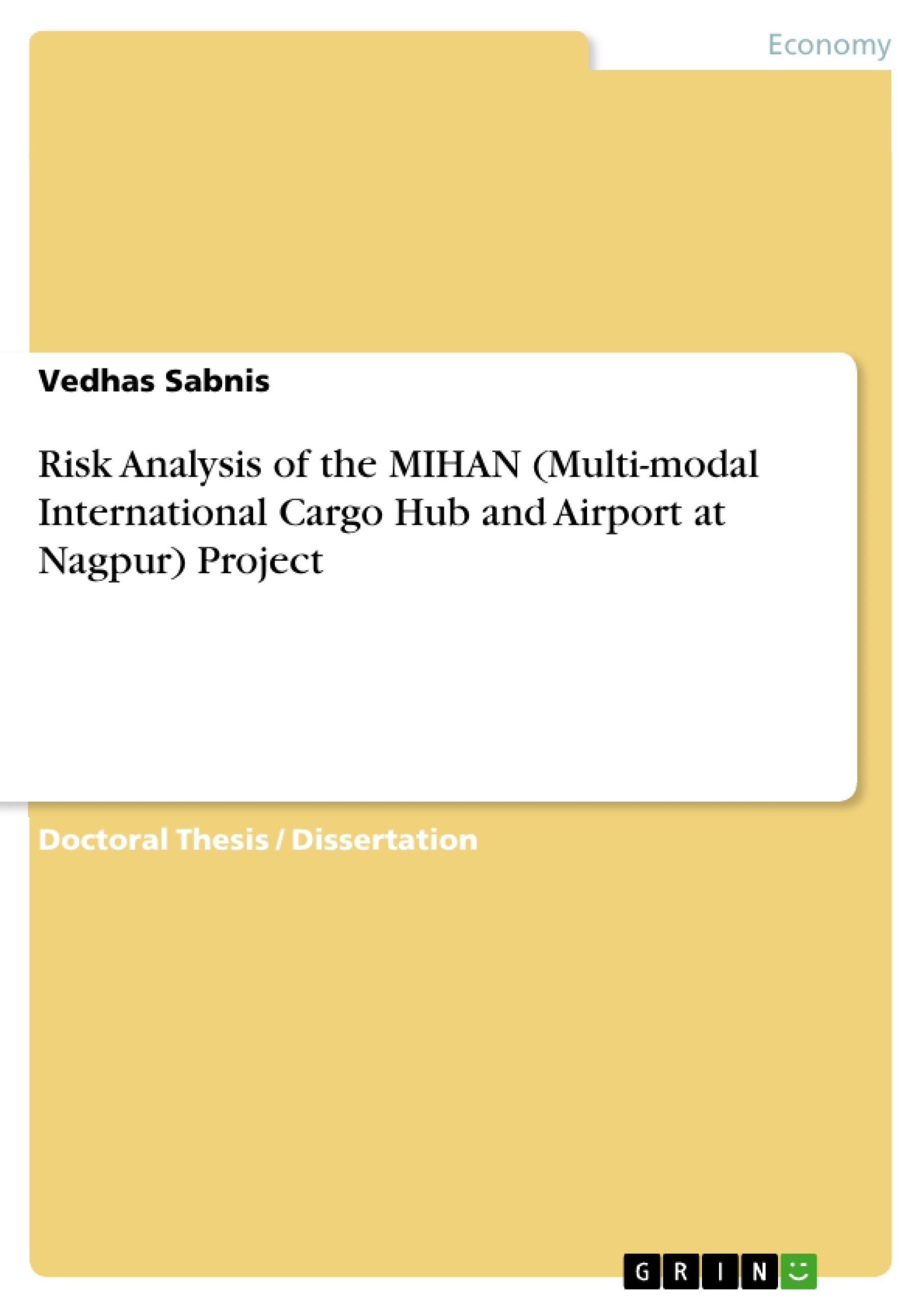This project aimed to study the application of risk assessment by conducting a risk assessment exercise for the various departments controlling the MIHAN project. The project is an ambitious vehicle of the Government of Maharashtra, India, located in Nagpur which is further located in the geographical centre of India. It consists of a unique combination of a free trade zone located adjacent to the Dr. Babasaheb Ambedkar International Airport. This research reviewed four key departments of the parent company for relevant risks. The research approach used was inductive and the methodology was qualitative. Personal interviews were conducted with the process owners of the departments with the questionnaire style being open and unstructured.
This research was significant and unique because no risk assessment exercises were conducted for the project prior to this study. From the analysis of key risks and their departmental controls, findings related to the overall approach to risk management of the departments are presented and suggestions are provided on improvement for all departments. A detailed airport expansion approach is also presented.
Table of Contents
- ABSTRACT
- ACKNOWLEDGEMENT.
- LIST OF ABBREVIATIONS
- INTRODUCTION
- BACKGROUND AND HISTORY.
- Aviation in Nagpur.
- About SEZ-MIHAN.
- PROBLEM STATEMENT
- RESEARCH QUESTIONS.
- RESEARCH OBJECTIVES..
- General Objective..
- Specific Objectives.
- RESEARCH MOTIVATION
- LITERATURE REVIEW....
- REVIEW OF RELEVANT LITERATURE:.
- KEY DEFINITIONS...
- RESEARCH METHODOLOGY.
- RESEARCH PHILOSOPHY
- Positivism
- Pragmatism..
- Interpretivism..
- RESEARCH APPROACH.....
- Deductive Approach..
- Abductive Approach...
- Inductive Approach.
- RESEARCH METHODS
- Quantitative method..
- Qualitative method.
- RESEARCH DESIGN
- Ethnography..
- Phenomenology
- Grounded Theory
- Narrative.
- Case Study.
- DATA COLLECTION
- Expert Interviews.
- Questions
- RESULTS AND DISCUSSION
- ENGINEERING DEPARTMENT RISKS.
- PLANNING DEPARTMENT RISKS
- MARKETING DEPARTMENT RISKS..
- AIRPORT DEPARTMENT RISKS......
- DEPARTMENT-WISE RISK MANAGEMENT REVIEW
- Engineering Department....
- Planning Department......
- Marketing Department....
- Airport Department....
- EXPANSION OF THE MIHAN PROJECT.
- CONCLUSION AND RECOMMENDATIONS.
- CONCLUSION
- RECOMMENDATIONS.
- For the MIHAN project...
- For future SEZ - airport combined projects.
- For Further Research on Risk Management...
- LIMITATIONS.........
- LIST OF REFERENCES
- APPENDIX - QUESTIONS AND RESPONDENT ANSWERS.
- PLANNING DEPARTMENT.
- ENGINEERING DEPARTMENT
- MARKETING DEPARTMENT
- AIRPORT DEPARTMENT
Objectives and Key Themes
This dissertation aims to conduct a comprehensive risk assessment of the MIHAN (Multi-Modal International Cargo Hub and Airport at Nagpur) project in India. The project is a joint venture between the Government of Maharashtra and private investors, and is intended to create a major logistics and economic hub in the region. The study utilizes a qualitative research methodology, focusing on the perspectives and experiences of key department heads at MIHAN.
- Risk assessment within a complex infrastructure project
- Qualitative research methodology and data collection through expert interviews
- Risk management strategies and mitigation measures
- The potential for future expansion of the MIHAN project
- Lessons learned for similar future SEZ-airport projects
Chapter Summaries
- The Introduction provides a comprehensive background on the MIHAN project, its history, and its significance within the Indian aviation sector. It defines the problem statement, research questions, and objectives of the dissertation.
- The Literature Review section provides a framework for understanding the concept of risk assessment within the context of complex infrastructure projects. It includes a review of relevant literature on risk management methodologies, key definitions, and frameworks for assessing and mitigating risks.
- The Research Methodology chapter outlines the philosophical underpinnings and methodological approaches adopted for this research. It discusses the choice of qualitative research methodology, including the use of inductive reasoning, expert interviews, and data analysis techniques.
- The Results and Discussion section presents a detailed analysis of the identified risks within each of the four key departments: Engineering, Planning, Marketing, and Airport. It includes an examination of departmental-wise risk management reviews and an evaluation of the effectiveness of current risk management strategies.
- The Expansion of the MIHAN Project chapter explores the potential for future expansion of the project and considers the implications for risk management. It includes a discussion of the proposed expansion plans and a review of potential risks and opportunities associated with expansion.
Keywords
The dissertation centers on the key concepts of risk assessment, risk management, qualitative research, infrastructure projects, and aviation development. It further explores the unique case study of the MIHAN project, its departmental risks, and the potential for future expansion within the context of a special economic zone (SEZ) and airport infrastructure development.
- Quote paper
- Vedhas Sabnis (Author), 2019, Risk Analysis of the MIHAN (Multi-modal International Cargo Hub and Airport at Nagpur) Project, Munich, GRIN Verlag, https://www.grin.com/document/948566



